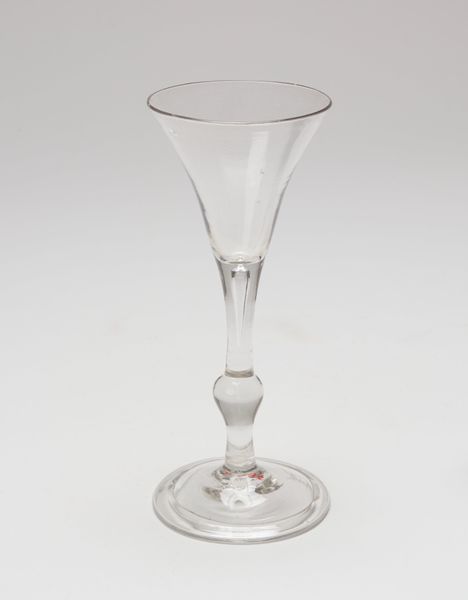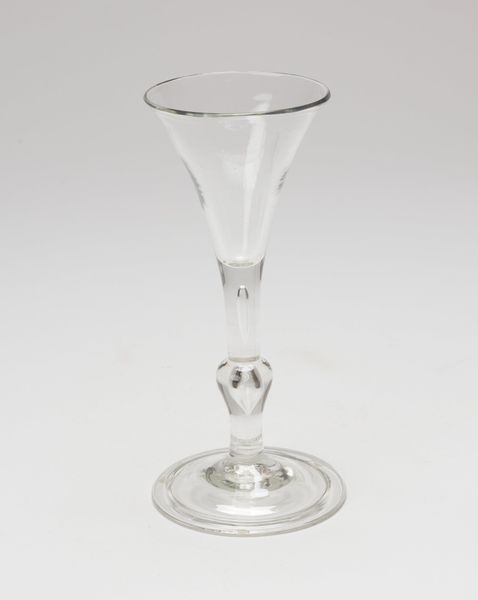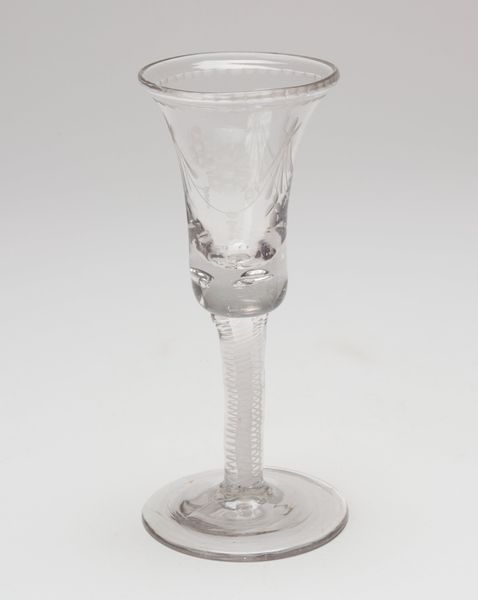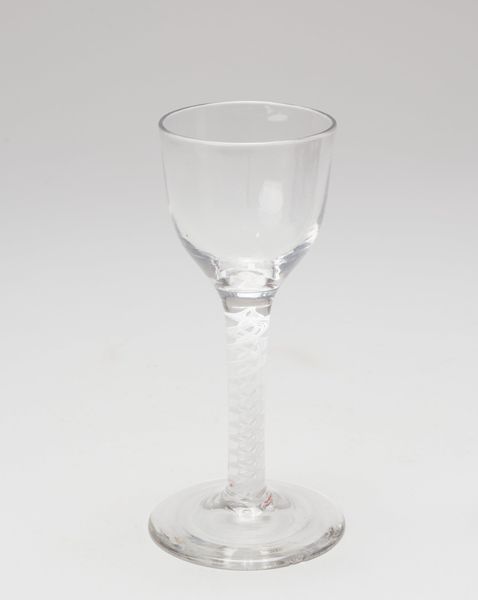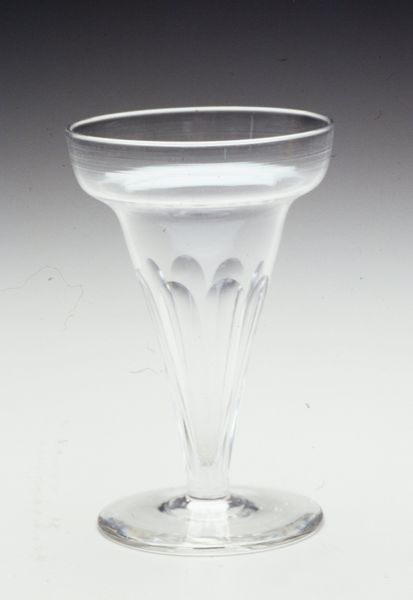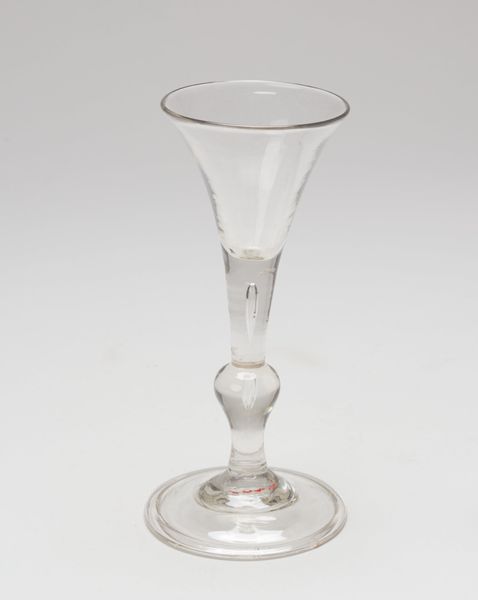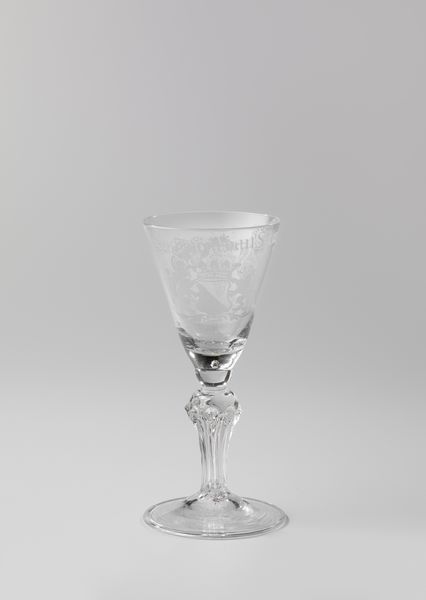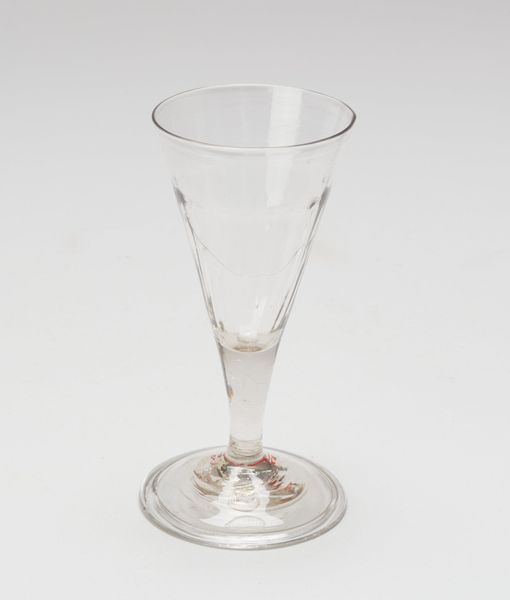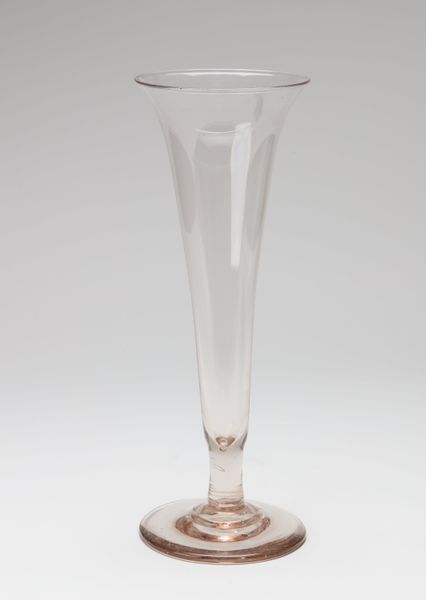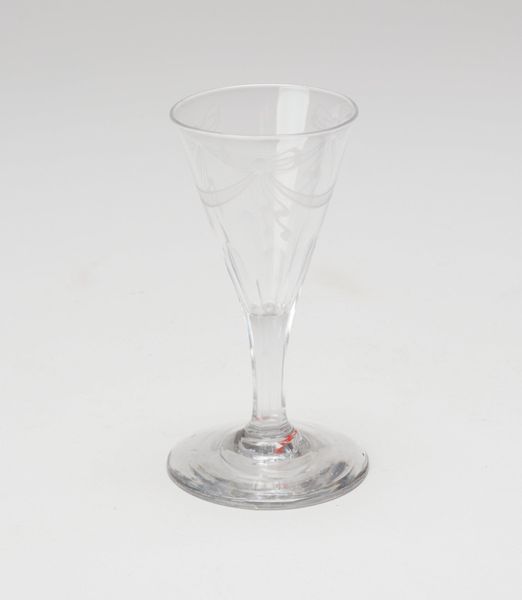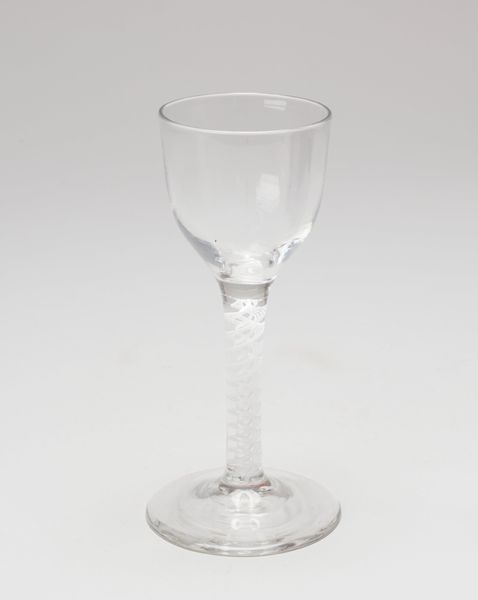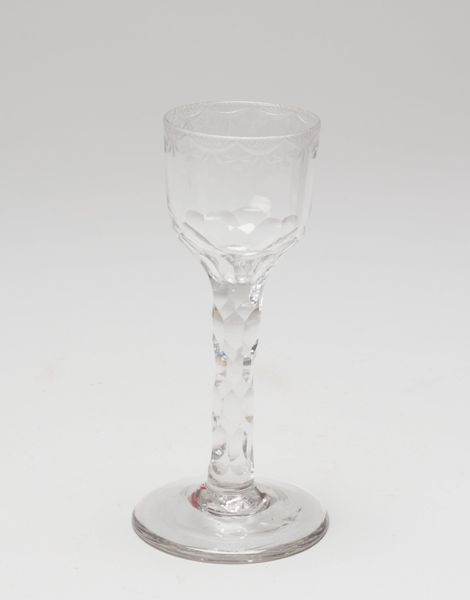
glass
#
baroque
#
glass
Copyright: Public Domain
Curator: Welcome. Before us is an elegant goblet, dating back to between 1745 and 1765. Fashioned from glass, its refined silhouette is an example of Baroque artistry. Editor: It's strikingly fragile-looking, isn’t it? That incredibly slender stem, like it could snap with the slightest pressure. It definitely evokes an air of aristocracy and controlled excess. Curator: Absolutely. During the Baroque period, elaborate displays of wealth and power were expressed through decorative arts. A goblet such as this reflects the social rituals of the elite, where fine glassware was integral to dining and celebrations. Editor: And let's consider what it held, right? Not just water. I bet it saw a lot of wine. Feasting and luxury at a time when access to such things was radically uneven. This kind of object carries a heavy, albeit invisible, socio-political charge. How does owning it change or affect individual interactions? Curator: Indeed. The twisted pattern work of the stem is something I also want to point out: this period reflects developing glass-making techniques which became an integral element of craft guilds. It highlights the development of manufacturing processes which were shaping emerging industrialization. Editor: It almost seems too delicate for practical use, leaning more into ostentation, even though the Baroque had already peaked in France before the mid 18th century. One could view such luxury, or lack thereof, from so many diverse vantage points—for both those inside and those excluded from its promise. Curator: And a closer inspection might help expose additional narratives. Thanks for encouraging me to consider more vantage points when looking through history. Editor: Always happy to. Viewing these materials offers insights, but questioning the implications, particularly today, makes the story complete.
Comments
No comments
Be the first to comment and join the conversation on the ultimate creative platform.
